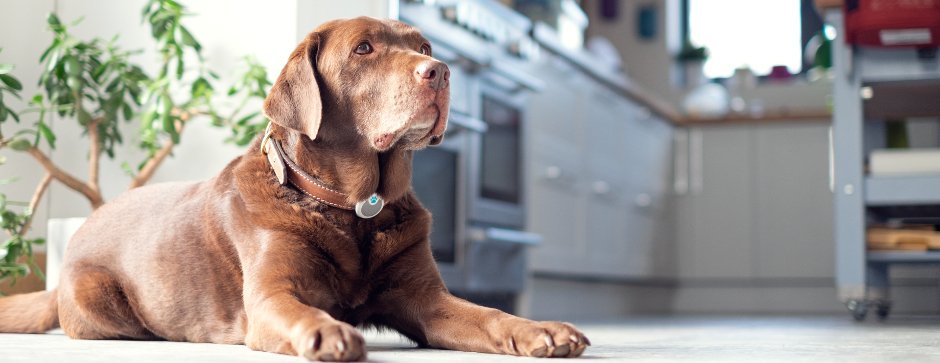Three ways you can teach alone time to your pup!
If you have recently added a puppy to your family, it may or may not come as a surprise to you that puppies aren’t huge fans of being left alone!
Remember, the first few months of your puppy’s life are spent with their mother and siblings, so alone time isn’t something that is comfortable or familiar to them.
Fortunately, there are ways to train your puppy to enjoy alone time that will reduce stress on both of you! This article will cover the way to properly introduce and maintain alone time for your new puppy.
Before you determine the technique that best fits your situation, it is important to learn what motivates your puppy and what makes them happy.
For example, some breeds are generally very food motivated, so using techniques that incorporate food might work best for them. However other breeds may be less motivated by food and would prefer different enrichment opportunities. Your dog could be motivated by play or praise, or simply just like having some noise and comfort items.
Robert Thomas says “One last thing to consider is how to ensure your puppy is safe while they are alone”. Puppies are much like children, they are curious and they put everything in their mouths. It is important when you leave your puppy to ensure that they are not at risk of eating something they shouldn’t or injuring themselves.
While it might seem like a good idea to leave your puppy with lots of blankets and plush toys, if your puppy is in a stage where they are eating those types of materials then you need to only leave them with things they won’t chew. Although putting them in a crate might be a little stressful to start with, having them fall down the stairs while you aren’t home is far more dangerous!
1. Feed Meals In A Safe Area
The first step in teaching your puppy to be alone is allow them to get used to the idea while you are still in the house. It is unfair to expect your puppy to go from constant companionship to hours alone. You’ll need to start by choosing a safe space such as a crate, exercise pen or a small room of the house (i.e. bathroom with things picked up off the floor). If you teach your puppy that their safe space is for relaxation and comfort, they will not associate alone time with punishment.
To help your puppy associate the area with positive experiences you can feed meals and if the area is big enough spend some time playing in there. It is ideal for the puppy to have access to this area at all times, so they don’t associate it solely with being alone. You can even set aside special, safe, toys that your puppy only gets when they are in their safe space to make it more fun! Encourage your puppy to settle in their crate when they are ready to take a rest, and place it in view of you so they feel safe enough to sleep.
When your puppy regularly goes into their area happily and on their own you’re ready to start alone time training!
2. Start Using A Safe Space
Begin the process by closing your puppy in their safe area with a chew toy or another constructive toy. This is where finding what motivates your puppy is very helpful. For a food motivated dog, you can use a Kong with dog friendly peanut butter (does not contain xylitol) or a lick mat with pumpkin or suitable baby food purees.
(Pro Tip: If you freeze the Kong or lick mat once you add the food prior to giving it to your puppy it will last longer, and the cold will help with teething if they are in that stage!)
For nonfood motivated dogs you could try chew toys that are appropriately sized for your puppy!
Once you give them their treat or toy, quietly walk out of the room. At this stage, return immediately and give quiet praise and a treat, and then repeat the process. Each time spend a little more time away from the puppy. Your goal is to enforce the idea that alone time is fun, and you’ll always be back. At first two minutes may seem like a lifetime, but if you work diligently for a few weeks soon an hour or two will pass before either of you notices.
If your puppy starts crying, wait for them to settle, go in and reward them with quiet praise and a treat and take a few steps back in your training. Stay closer to the crate and reduce the length of time you leave them. Return to feeding meals and playing in the area and shorten the time they are left alone. It is likely they weren’t ready for the amount of time they were left, and you want to keep enforcing the idea that alone time is safe and happy.
Your goal with alone time training is to create a confident, happy adult dog that is comfortable in their own space. Starting with nothing but positivity and fun is the way to do that. It is not recommended to use their safe space as punishment because they will start to build a negative connotation with the area and not want to be left alone.
3. Use Enrichment
Once you’ve trained your puppy on how to be alone, here are three possible scenarios for how to leave them at home and what to include:
Secure Your Puppy In Their Crate:
Secure your puppy in their crate with a food toy and/or a chew toy. Make sure these are safe, unable to be destroyed or consumed, and appropriately sized for your puppy. It may help to place the crate next to a window/door so they can see outside, or leave the radio or TV on to provide background noise for your puppy. If your puppy chews their blankets, you can place a crate mat or bed in there that they will be less likely to chew.
Exercise Pen with Enrichment:
This area will generally be a bit bigger than a crate and your puppy will have more room to move around and play. Food toys and chew toys are still great options to include, but in this instance if your puppy really enjoys a ball or another active toy, as long as they cannot destroy it you could include that too! Remember, if your puppy has lots of room to play they also have enough room to go to the bathroom without soiling their bed/blankets. If you don’t want that, consider a crate.
Small Room with Enrichment:
This area could be a laundry room or a bathroom with everything picked up off the floor. It will function similar to an exercise pen, but it is unlikely there will be a TV in there so you may have to use a radio for background noise. Ensure whichever small room you choose isn’t dangerous for your new pup! Training alone time can be challenging and stressful for both puppy and owner, but if you follow these steps and remain patient and calm throughout the process your puppy will follow your lead. Good luck!
![<?php echo $store[store_name]; ?> flag](https://media.surepetcare.com/website/images/homepage_tiles/shopping-cart.png)



